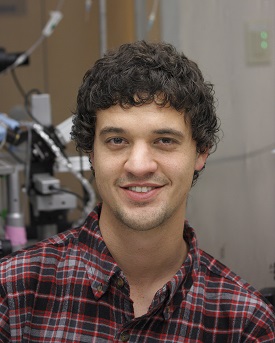Corwin Butler, Ph.D.

Corwin Butler, Ph.D.
Assistant Professor
Oregon Health & Science University
3181 S.W. Sam Jackson Park Road
Portland, OR 97239
Mail Code: L459
Email: butlecor@ohsu.edu
Research
We are interested in how both local and long-range projecting interneurons contribute to circuit functions within the hippocampus during health and disease. The vulnerability of hippocampal interneurons to brain insults like traumatic brain injury and seizures may underlie both dysfunction of hippocampal circuits and later disease development. My lab uses electrophysiology, immunohistochemistry, viral vectors, transgenic mouse lines, live cell imaging, and translational models of neurological disorders to investigate these research questions.
One of our recent interests is in the role of hippocampal interneurons in the process of adult neurogenesis. The integration of newly generated neurons is a complex process that supports the maintenance of information flow and circuit function for the hippocampus and early synaptic inputs arise primarily from hippocampal interneurons. Adult neurogenesis often becomes aberrant following brain injuries and may underlie circuit dysfunction and disease development. Improving our understanding of the role of hippocampal interneurons in adult neurogenesis could provide critical insights to improve future therapeutics for neurological diseases like post-traumatic epilepsy.
Research Team
Publications
- Kang Y-J*, Lee S-H*, Boychuk J.A.*, Butler C.R., Juras J.A., Cloyd R.A., Smith, B.N. (2022) Optogenetic activation of adultborn granule cells drives synaptic excitation of hilar interneruons and enhances recurrent synaptic inhibition of the dentate gyrus after traumatic brain injury. Journal of Neuroscience, 42(37), 7077-7093, *These authors contributed equally
- Boychuk J.A.*, Butler C.R.*, Smith K.C., Smith B.N. (2022) Zolpidem profoundly augments spared tonic GABAAR signaling in dentate granule cells ipsilateral to controlled cortical impact brain injury in mice. Frontiers in Systems Neuroscience 16.*These authors contributed equally
- Butler C.R., Westbrook G.L., Schnell E. (2022) Adaptive mossy cell circuit plasticity after pilocarpine-induced status epilepticus. Journal of Neuroscience, 42(14), 3025-3036
- Isakharov A., and Butler C.R. Does delayed microglial ablation alter outcomes after traumatic brain injury? (2020) Journal of Neuroscience, 40(43): 8211-8213.
- Butler C.R.*, Boychuk J.A.*, Pomerleaud F., Alcalae R., Huettl P., Ai Y., Jakobsson J., Whiteheart S.W., Gerhardt G.A., Smith B.N., Slevin J.T. (2020) Use of optogenetics to modulate epileptogenesis. Epilepsy Research. 159:106244 *These authors contributed equally
- Boychuk C.R., Smith K.C., Peterson L.E., Boychuk J.A., Butler C.R., Derera I.D., McCarthy J.J., Smith, B.N. (2019) A hindbrain inhibitory microcircuit mediates vagally-mediated glucose regulation. Scientific Reports. 9(1), 2722
- Butler C.R.*, Boychuk J.A.*, Smith B.N., (2017) Brain injury-induced synaptic reorganization in hilar inhibitory neurons is differentially suppressed by rapamycin. eNeuro, 4(5), ENEURO-0134. *These authors contributed equally
- Butler C.R., Boychuk J.A., Smith B.N. (2016) Differential effects of rapamycin treatment on GABAergic inhibition in mouse dentate granule cells after focal TBI. Experimental Neurology. 280:30-40.
- Boychuk J.A., Butler C.R., Halmos K.C., Smith B.N. (2016) Enduring changes in tonic GABAA receptor signaling in dentate granule cells after controlled cortical impact brain injury in mice. Experimental Neurology. 277:178-189.
- Butler C.R., Boychuk J.A., and Smith B.N. (2015) Effects of rapamycin treatment after controlled cortical impact injury on neurogenesis and synaptic reorganization in the mouse dentate gyrus. Frontiers in Systems Neuroscience. 9:163.